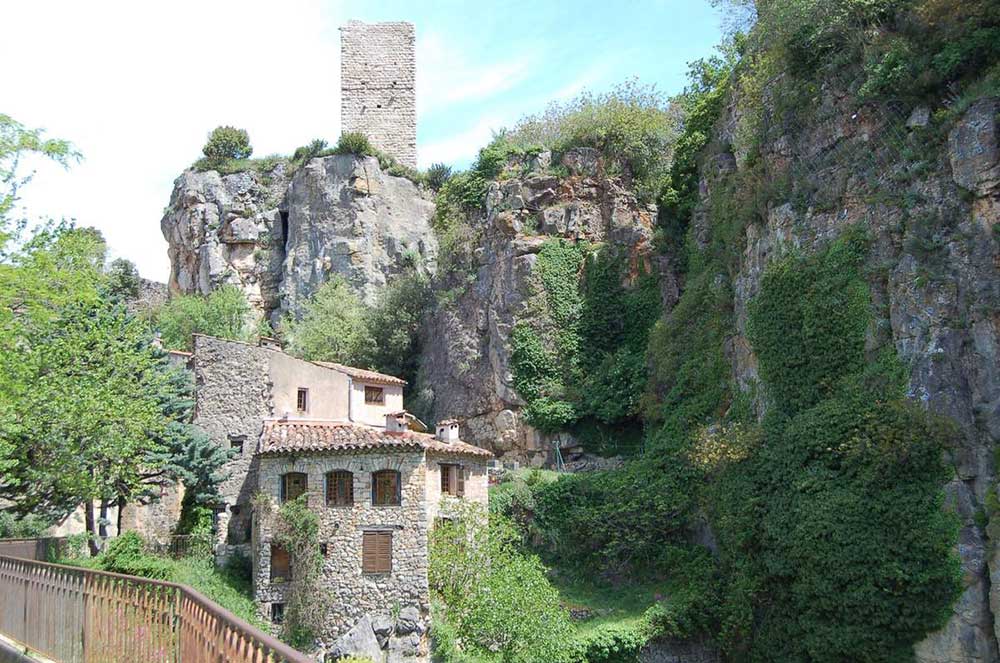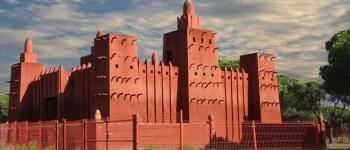
Châteaudouble, is a veritable eagle's nest, perched vertiginously on the edge of a cliff and which has retained its medieval appearance.
It is mentioned as early as 1021 as "Castellum Diaboli" and then in 1038 as "Castel Dulpo".
The commune takes its name from the presence of 2 castles, one above the village, the other on the bank of the Nartuby river.
A bit of history...
Châteaudouble has had a tumultuous past which is revealed in the calade-shaped streets and vaulted passages, on the sculpted pediments of Roses Croix, souvenirs of the Knights Templar, or on the facades of the 18th-century mansions that line the banks of the Nartuby.
Previously, during the pre-Roman period, the inhabitants, who were a little more numerous, built high fortified dwellings (oppidum, castellum) of which there are no vestiges because they put up fierce resistance to the Roman occupation.
The Roman general is said to have withdrawn saying that it was "spelunca latronum", a cave of brigands.
Over the years, the cliff, which could only be accessed from the northwest, was fortified and defended by a tower built in the Middle Ages. The inhabitants built a cistern which was fed with water from the roof of the church of Our Lady of the Fort, built on the rock a few metres from the water supply. The tower dates from the 10th century, and a small building was added to it for the garrison. The cistern, the fortifications and the ruins of the church are still visible today.
Towards the middle of the 15th century, the village built on the rock was abandoned, as the site proved to be too cramped. It will be rebuilt where it is now, around the new church dedicated to Our Lady of the Annunciation.
The old church will be used by the White Penitents until the Revolution to perform the services.
Châteaudouble, given its location, will only experience mule traffic through caladic roads, no road serving the village until the nineteenth century. It is probably for this reason that the village was known as the "Gimerri", (mules), the nickname given to the inhabitants who often travelled on men's backs or with mules.
At the beginning of the fourteenth century the population was 370, in 1765 it was 982, and it remained around this number until the end of the nineteenth century.
Its narrow streets climb the steep slopes to the ruins of the castle. The entrance door to the village is pierced in a huge rock and the road goes 40 metres into the rock.
Opposite Châteaudouble, on the other side of the gorge, stand the ruins of a second castle.
During your visit, you should stop and appreciate the church Notre-dame de l'Annonciation, the grand laundry, the chapel of Saint Pierre, the remains of the castle, the Saracen tower...
To see around...
- The gorges of Châteaudouble, carved by the Nartuby River in the heart of fragrant and colourful undergrowth.
- The classified prehistoric caves: Caves of goats, caves of bats and cave of Mouret.
- The Hameau de Rebouillon, an island of greenery bordered by the Nartuby and by the canal of Queen Jeanne, surprisingly built in a hemicycle around a castle park.
Without forgetting the Leisure Park, "Circa'Parc".
Town Hall of Châteaudouble
Place Vieille
83300 Châteaudouble
Tel: 04 98 10 51 35
https://chateaudouble.fr/
Translated with www.DeepL.com/Translator
(free version)





